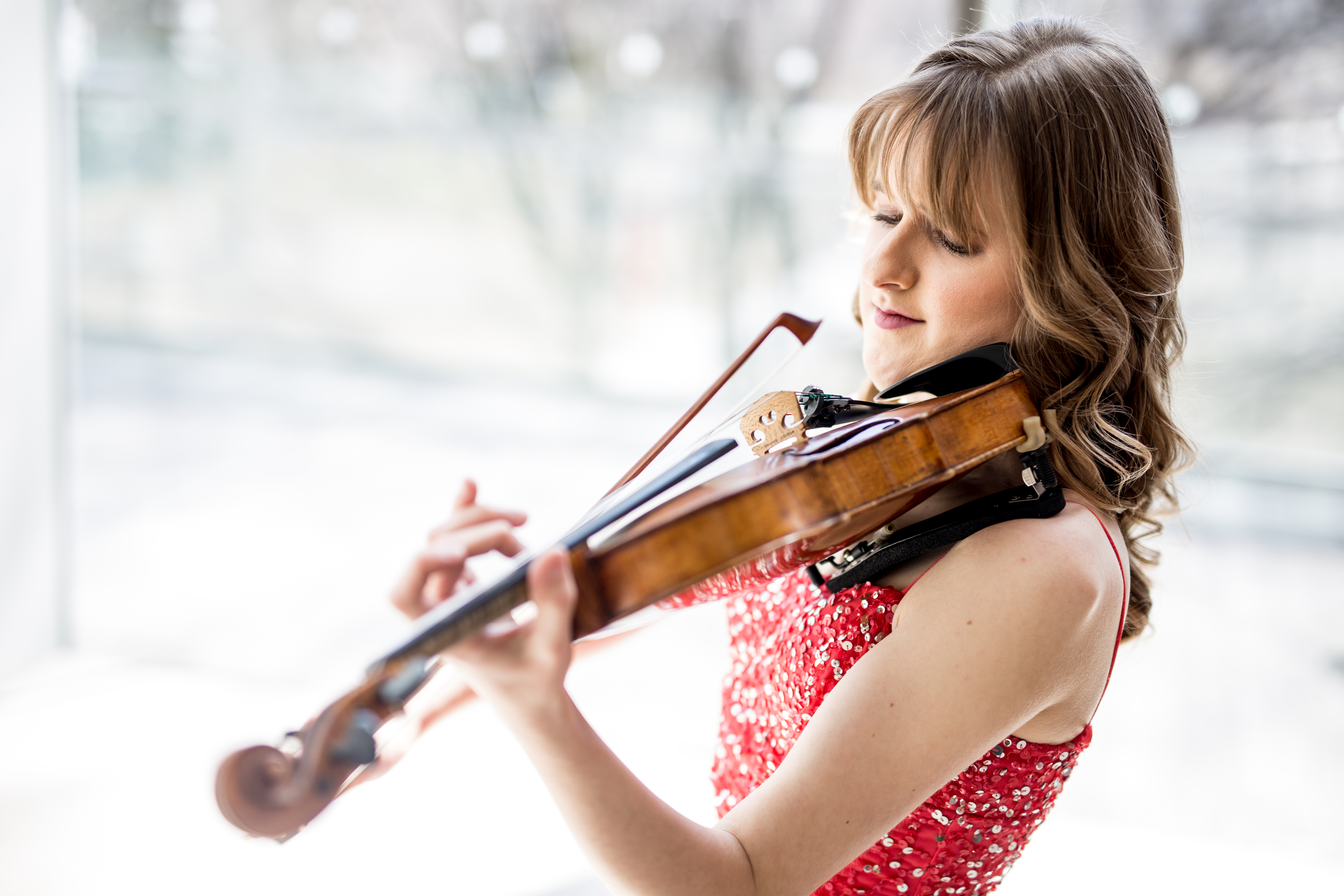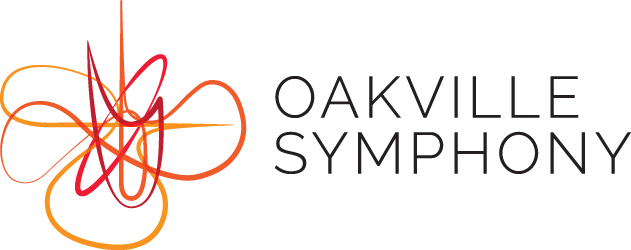Guest Artist:
Leslie Ashworth, Violin
Program
DVORAK – Violin Concerto
BRAHMS – Symphony #2
March 30–31, 2019
Oakville Performing Arts Centre
Program Notes
Antonin Dvorak (1841-1904): Violin concerto in A minor, Op. 53
I: Allegro ma non troppo II: Adagio ma non troppo III: Allegro giocoso, ma non troppo
Dvorak completed the first draft of this concerto in 1879-80, shortly after he had achieved international fame with works such as his immensely popular Slavonic Dances. The distinguished Hungarian violinist Joseph Joachim had recently helped Brahms to finalise the solo part of his violin concerto (and he gave its first performance in 1879), and he had similarly assisted Bruch. With this background, Brahms introduced the relatively inexperienced Dvorak to Joachim, and Dvorak delivered the score of his own concerto for comments by Joachim in 1880. However, Joachim proved tardy and pedantic in his proposed changes, both in the solo part (some sections were “too difficult…”) and the orchestration. The net result was a delay of over three years, until a substantially modified score was finalised in 1883.
Unconventionally for the time, there is no extended classical orchestral introduction, but after a simple fanfare, the soloist begins almost immediately with a dancing theme. After several thematic groups, there is a transition without a break to the second movement through a cadenza-like passage.
The Adagio is perhaps the most rewarding of the three movements for the listener. It is in three sections, beginning with a romantic melody in the solo part. There is a stormier middle section, and then the initial melody returns in a modified form, but now played by the horns and with a delicate solo part above that.
The third movement is in the form of a sonata-rondo, and is based on a fast, syncopated Czech waltz, known as a furiant. The giocoso (“playful”) marking strongly recalls the style of the Slavonic Dances.
Johannes Brahms (1833-97): Symphony No. 2 in D major, Op. 73
I: Allegro non troppo II: Adagio non troppo III: Allegretto grazioso IV: Allegro con spirito
Brahms’s Symphony No. 1 is famous for its long, 15-year gestation. Finally published when Brahms was 43, it represented a new departure with its epic musicianship, and it firmly established his reputation. With this hurdle successfully cleared at last, Brahms moved on quickly to complete his Second Symphony in only two months in 1877.
Although his followers had been expecting another dramatic musical statement, the new symphony turned out to be much lighter in character. While the Germans expressed disappointment, the symphony’s first performance in Vienna was enthusiastically received. Indeed, this work is sometimes referred to as the “Vienna Symphony”, in recognition of its serene and pastoral disposition. Despite its often peaceful approach, it also features some powerful orchestration: for instance, this is the only one of Brahms’s four symphonies that includes a tuba.
The thematic material is mostly based on a three-note motif, D – C sharp – D, heard in the very first bar, in the lower strings; this may suggest the reflection in a mountain lake. The motif is immediately developed into the first main theme by the horns. Later, there is eloquent and wistful song in the cellos and violas, then continued by the flutes. A coda features a beautiful horn solo, suggesting the peaceful depths of the forest.
The second movement Adagio continues the pastoral mood with interplay between the cellos and woodwinds. The third movement essentially has the form of an intermezzo. A main theme in the bassoons and clarinets is heard over pizzicato cellos, and then follow two trios, each being a variation on the theme, interspersed with restatements of the melody.
In the final movement there is a more complex mix of three main themes: a simple melody in the strings, a more subdued passage in the woodwinds, and a stately tune in the violins. Each of these ideas is developed in a jubilant way, leading eventually to a coda (based on the opening of the third theme), bringing the work to a forceful conclusion.
Notes © by Stephen Walter
About Leslie Ashworth

Canadian violinist, violist, pianist, and composer Leslie Ashworth has performed as soloist with numerous orchestras across Canada and in celebrated venues such as Koerner Hall, Vancouver Convention Centre with the University of British Columbia Orchestra, Carnegie Hall, and Rolston Hall in the Banff Centre. She is the winner of the Grand Prize in the Canadian Music Competition and gold medalist of the ‘Passion of Music’ International Competition in New York City. She has appeared in performance and interviewed on Toronto’s Classical 96.3FM and Classical 94.5 Buffalo WNED radio stations. Leslie has achieved her ARCT from the Royal Conservatory of Music in both Violin and Piano Performance.
Leslie is currently studying her Bachelor of Music Degree in Performance on full scholarship as recipient of the Tim and Frances Price Scholarship at the Glenn Gould School of the Royal Conservatory of Music. Her primary teachers are Barry Shiffman and Paul Kantor.
Leslie has participated in numerous renowned festivals including the International Music Festival of the Adriatic in Duino, Italy (2018), Domaine Forget Music Festival in Quebec (2018), Tafelmusik Baroque Summer Institute (2017), Brott Music Festival’s National Academy Orchestra (2017), New York String Orchestra Seminar at Carnegie Hall (2016), Strings Masterclass Program at the Banff Centre (2013-2016), Aspen Music Festival & School (2014), and the Summit Music Festival in New York (2013). She has performed in masterclasses of renowned artists, such as Donald Weilerstein, Miriam Fried, Glenn Dicterow, Ilya Kaler, James Ehnes, and Leon Fleisher.
Leslie is the Founder and Director of the Suite Melody Care program which encourages talented, young musicians across the country to give back to their community by performing in their local hospitals, long-term care, and retirement homes. Leslie was honoured with the Ontario Lieutenant Governor’s Community Service Youth Awardfor her dedication to giving back to the community and inspiring youth through Suite Melody Care performances. Leslie’s third CD/DVD, The Suite Melody Care CD/DVDis available online at www.suitemelodycare.com.
Leslie was selected as one of eight writers to participate in the Emerging Arts Critics Programme 2018-19 with the Toronto Symphony, Canadian Opera Company, and National Ballet, receiving mentoring by and publishing in the WholeNote, Opera Canada, and Dance Current magazines.
In addition to her classical studies in violin, viola, piano, and conducting, Leslie enjoys studying and playing jazz piano. She has also studied Celtic fiddling, in Cape Breton Island, Nova Scotia. Leslie loves playing chamber music with her colleagues and mentors and also enjoys teaching the violin and piano at the Oakville School of Music. Composing is another of Leslie’s favourite ways of expressing herself, creating over 30 original pieces.
Born and raised in Oakville, Leslie has enjoyed numerous collaborations with the Oakville Symphony and is excited to return to their concert series in performances of the Dvorak Violin Concerto.
Leslie currently plays on a 1696 Albani violin and an 18th Century anonymous Bohemian viola both on loan to her from generous benefactors.
For more information about Leslie, visit www.leslieashworth.ca.
